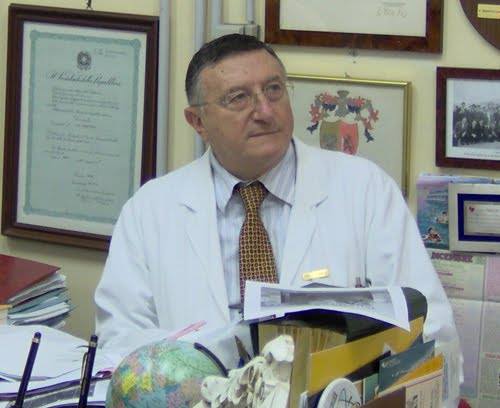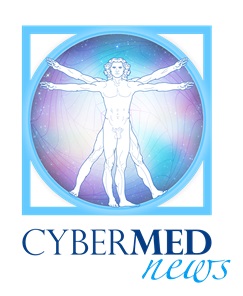 Share on Facebook
Share on Facebook
 The spread of COVID-19 continues in China and in the world as the World Health Organization (WHO) baptized it, warned since 31-12-2019 of the new SARS (Severe Acute Respiratory Syndrome). The epidemic has its own basic reproduction number, R0, which is considered less than 1 when it runs out of passage from one individual to another and tends to rise as in the previous SARS epidemic (2002-2003) between 2 and 4 to get to measles with values of 12-18. The current R0 is estimated between 2 and 3. More than 70 thousand are infected today 17-2-2020, with almost 2 thousand deaths. Flights to China have been suspended, while seasonal flu has infected and killed more people.
The spread of COVID-19 continues in China and in the world as the World Health Organization (WHO) baptized it, warned since 31-12-2019 of the new SARS (Severe Acute Respiratory Syndrome). The epidemic has its own basic reproduction number, R0, which is considered less than 1 when it runs out of passage from one individual to another and tends to rise as in the previous SARS epidemic (2002-2003) between 2 and 4 to get to measles with values of 12-18. The current R0 is estimated between 2 and 3. More than 70 thousand are infected today 17-2-2020, with almost 2 thousand deaths. Flights to China have been suspended, while seasonal flu has infected and killed more people.
As prevention we suggest what we already know for colds and flu: frequent and thorough washing of hands and face, covering oneself with the elbow from coughing and sneezing, even with ad hoc masks, staying at home if sick, requesting immediate medical intervention if breathing difficulties concern subjects returning from China for two weeks or less (incubation period of the current coronavirus disease, 2-14 days). The city of Wuhan with 11 million inhabitants and the province of Hubei in China are considered the epicenter of the new coronavirus epidemic (2019-nCoV). On January 30, WHO declared this epidemic a public health emergency of international interest (Public Health Emergency of International Concern, PHEIC). The United States declared the federal quarantine on February 2, two weeks of isolation, for the first time since the 1960s concerning the smallpox (National Center for Immunization and Respiratory Diseases, CDC). The isolation period coincides with that of the longest time between exposure and the onset of symptoms, i.e. 14 days both outside and inside China.
In an attempt to contain the new coronavirus for its easy spread, a crucial point is to establish whether infected people can transmit the infection without symptoms. According to A. Fauci, director of NIAID (National Institute of Allergy and Infectious Diseases), this asymptomatic transmission can take place by reporting what was communicated by reliable Chinese colleagues. However, the two previous SARS and MERS (Middle-East Respiratory Syndrome) outbreaks have spread from individuals with disease symptoms. Maria van Kerkhove (WHO) says, from experience of other diseases presented as asymptomatic, that when trying to deepen the personal history, patients are at the beginning of the symptomatology and therefore are not completely asymptomatic.
Healthcare workers are also paying a large contribution to the disease of the new SARS with 1,800 people infected with the new virus in mid-February and six mortalities including Dr. Li Wen Liang, the ophthalmologist who first felt the outbreak of a new epidemic working at Wuhan City Central Hospital. For his cry of alarm on December 30, 2019, the day before the Chinese authorities notified WHO of the outbreak of a city outbreak of atypical pneumonia, Dr. Li had to back off to avoid sowing panic according to the forces police premises. He became infected with glaucoma on an infected patient on January 10 and the diagnosis was confirmed on 30 to die on February 7. Rightly considered a hero now also at the China Center for Disease Control.
Between the recognition of an infant infected at birth (February 1) and thousands of tourists stranded on ships in Hong Kong and Japan for quarantine, on the Diamond Princess ship in Yokoahma 10% of people, 355, are infected between 5 and on February 16, a new hospital was built in 10 days in Wuhan for the hospitalization of new patients and a second was completed the following week (February 6).
The current epidemic has passed the previous SARS (2002-2003: 8096 cases diagnosed and 774 deaths) in the number of infected and dead nearly 50 days (February 17) since its discovery, over 70 thousand infected and more than 1900 dead. Together with China, where there are 99.1% of reported cases, there are 28 other countries reporting other cases that are slightly increasing, not only in the same geographical area of Asia, Japan, Singapore, Thailand, Hong Kong, Korea from the South, Taiwan, Malaysia, Vietnam, but also in other continents, Australia, America (USA, Canada), Europe (France, Germany, Italy) and now also Africa (Egypt, February 14). The main question concerns the origin of the new coronavirus: looking at the new sequences it is comparable to what we already have, it seems that it is a recombinant of previously known coronaviruses. As of January 20, 2020 as many as 14 genomic sequences of 2019-nCoV have been communicated by 6 different laboratories that are part of the National Center for Biotechnology Information's Genbank and GISAID (Global Initiative on Sharing All Influenza Data).
The molecular mechanisms underlying the functionality and pathogenesis of this new virus have been studied by researchers from the Chinese Academy of Medical Sciences and the Union Medical College in Beijing. Using 3 COVID-19 genomes, which were sequenced from samples collected on 30-12-2019 and 01-01-2020 by the National Institute Viral Disease Control and Prevention, which is part of the Chinese CDC and are available through GISAID . These genomic sequences have been compared to bat SARS coronavirus, human SARS coronavirus and human MERS coronavirus. Only 5 nucleodites were found out of a total of 29800 nucleodites of the 3 COVID-19 genomes and 14 "open reading" fragments were identified, capable of coding for 27 proteins, including 4 structural proteins and 8 accessory proteins. Previous research indicates that accessory proteins can mediate the response of the host cell to the virus, which can influence pathogenicity and can be part of the viral particle. Structural proteins are well conserved among all coronaviruses, while accessory proteins are generally unique for each specific coronavirus group. The amino acid sequences show the connections of these new viruses to the bat's SARS coronaviruses and a greater distance from the SARS coronavirus. Even more distant is the relationship of COVID-19 to the MERS coronavirus. The results of these researches have been published on Cell Host & Microbe (A. Wu et al., "Genome composition and divergence of the novel coronavirus (2019-nCoV) originating in China", doi: 10.1016 / j.chom.2020.02. 001,2020. Analysis of the COVID-19 coronavirus genome clearly shows that it belongs to a phylogenetic branch distinct from that of SARS, although both are derived from the SARS-type coronavirus isolated in the bat. How the new coronavirus has mutated and adapted to humans in a short time has yet to be focused, it looks like a recombinant of a number of different known coronaviruses. It is the third time this has happened in 17 years and we cannot know if we represent the final host. "At least 50 coronaviruses have been isolated in bats (mostly from the intestine) that represent the true reservoir of this viral family. "Let us now try to establish the etiopathogenesis, that is the how and why of the current SARS and above all or how we can prevent future epidemic outbreaks. Respiratory syndrome of the Middle East (MERS) helps us understand the entry door of the cells by the virus of both the bat and the camels or of the different animals (civet, ferret, rodents, pigs, dogs, cats, monkeys) to get there then to us humans. First the snakes then the pangolin (an anteater) were hypothesized as intermediate animals in the current epidemic.
The original transmission to man probably occurred while preparing raw meat from animals that are the reservoir of these viruses, we become infected through abrasions and cuts of the skin. This procedure is similar to that of the ebola virus and HIV (AIDS) which allegedly emerged in the human population due to the preparation of meat from wild animals in Africa.
To explain the recent cases of human-to-human transmission, we have traced back patients able to spread the virus more easily by air (aerosol) as for the flu and also observed for the MERS in the epidemic episode that occurred in South Korea (2015) .
The hypothesis has been made of certain super-diffusers, that is, infected individuals capable of spreading their infection to a large number of subjects, causing secondary and multiple cases that spread the virus over a wide range. This situation logically worsens the epidemic when it comes to international travelers.
For a few days, completely unexpectedly, Italy, which first blocked flights to and from China, has been in third place in the ranking of countries by number of infected subjects. In fact, with today's data of 77150 infected in China and 2626 dead, of the 2159 infected outside China, there is South Korea with 833 diagnosed cases and now Italy has entered with over 200 infected and 5 victims, preceding Japan with 154 cases, Singapore 89 cases, Hong Kong 79 cases, Iran with 61 Thailand with 35 cases, the USA with 35 cases and so on (32 countries). Apart from the cases of the Diamond Princess ship with 630 cases. In Italy the regions that pay the tax are the same ones that have the greatest productive activity and therefore more millions of tons of special products. Lombardy 167 patients (of which a doctor) and of which 3 victims, Veneto with 27 patients and 1 victim, Emilia-Romagna with 18 patients, 3 of which are health, of which 2 are doctors and Piedmont with 6 diagnosed cases. Finally Lazio with the famous Chinese couple who had represented the first cases in Italy and the 56th subject of the military flight to recover the Italians of Wuhan. It is only to be commented that 25 thousand of the Chinese diagnosed cases have already healed, while in Italy we have been in full panic syndrome for three days without considering in particular that the disease control center (CDC) in China reports a mild clinical trend for as many as 81% of the subjects affected by the coronavirus, with only 4.7% of serious course, and 13.8% intermediate.
The prospects at this point depend on the epidemiological behavior of the first SARS type, ending up and remaining a zoonosis in the province of origin or giving rise to sporadic epidemics such as MERS and avian influenza relatively for a few individuals or, finally, becoming a seasonal human respiratory virosis such as in the case of the latest flu virus of 2009 or other less aggressive regional coronaviruses.
Pending the preparation of a specific vaccine that can prevent the further spread of this coronavirus COVID-19, expected according to the WHO in 18 months, it is necessary to keep in mind a symptomatic therapy and similar to that of seasonal flu, especially for the more the elderly and with various pathologies that make them more sensitive to the virus - diabetics, cardiopaths, bronchopaths, etc.
Antibiotics are used for secondary bacterial infections, while cortisone drugs are not recommended.
Finally, the suggested antivirals range from Interferon and Ribavirin to anti-HIV therapy with Lopinavir / Ritonavir to finish with the new Remdesivir product used for Ebola. Obviously like gammaglobulins for tetanus, the plasma antibodies of the healed subjects represent a logical use for the most serious patients.
Prof. Giulio Tarro


